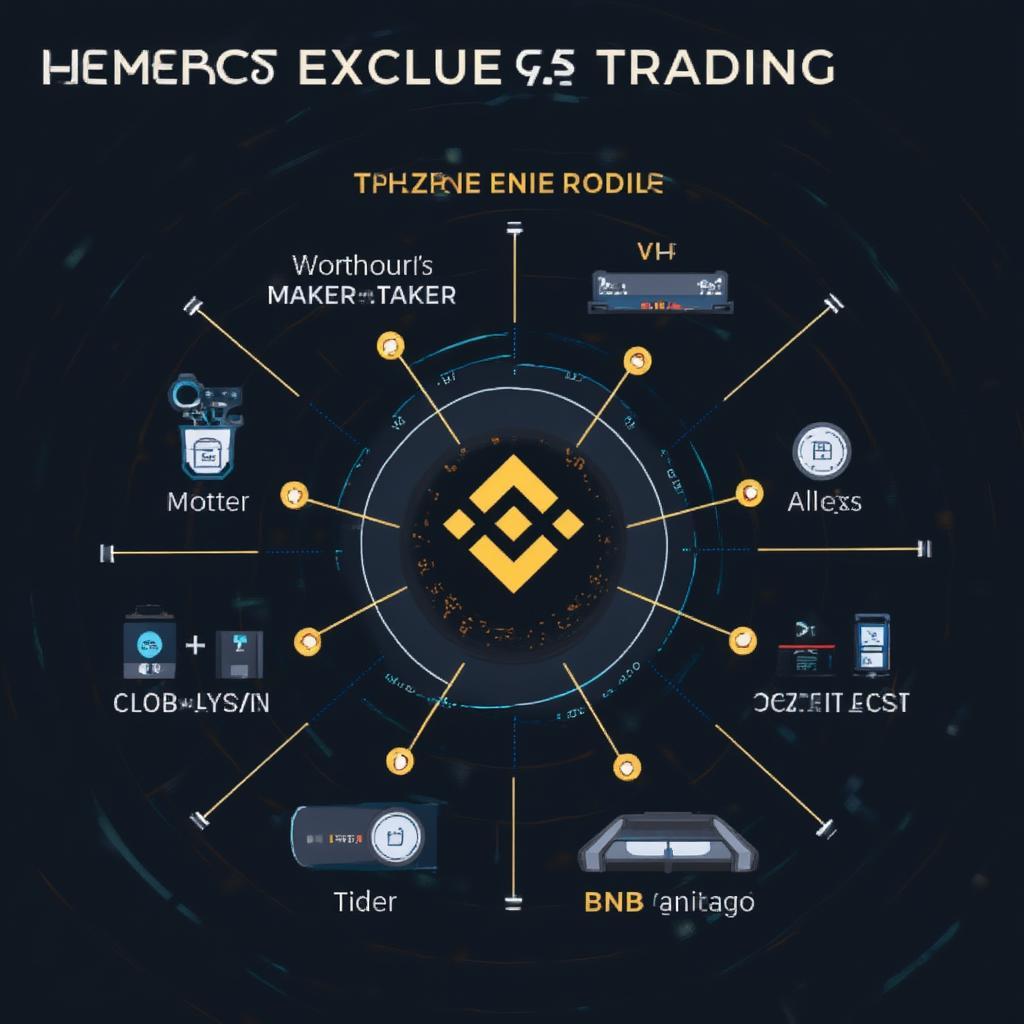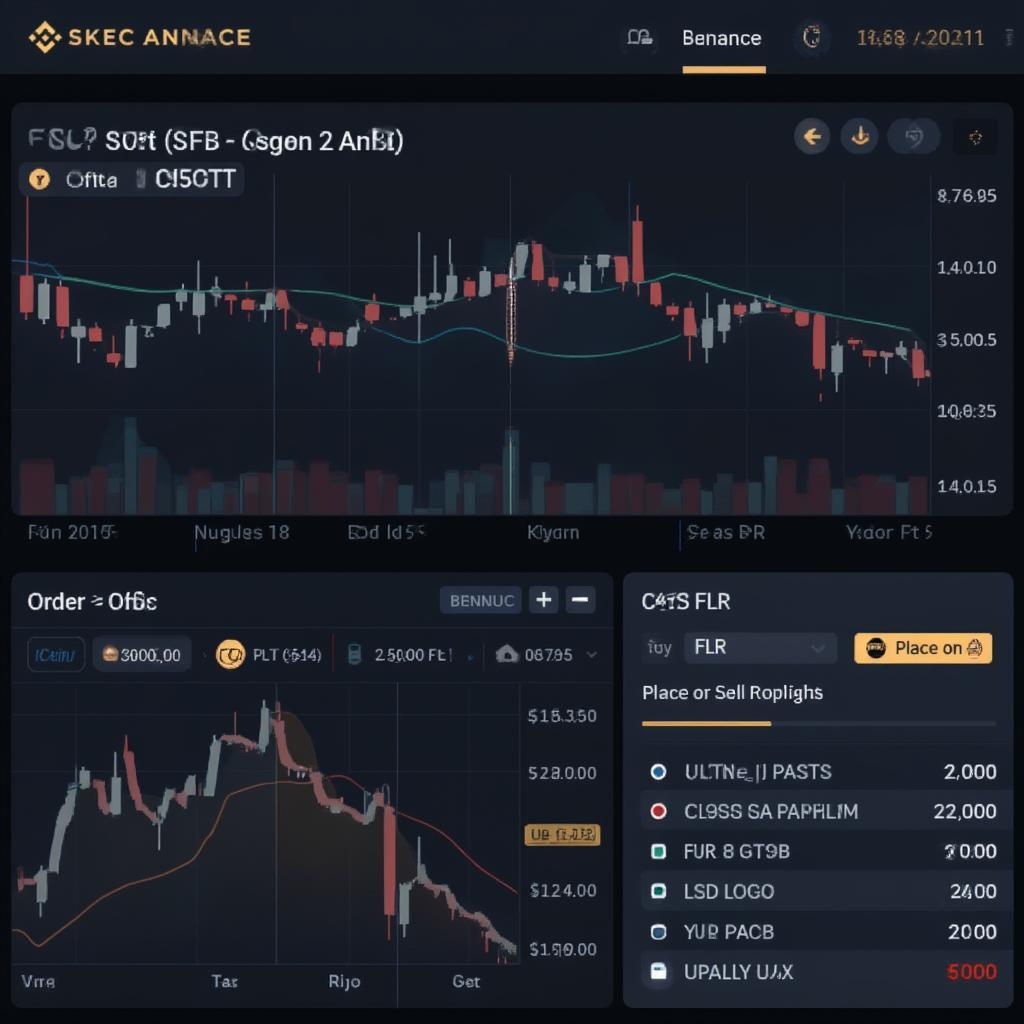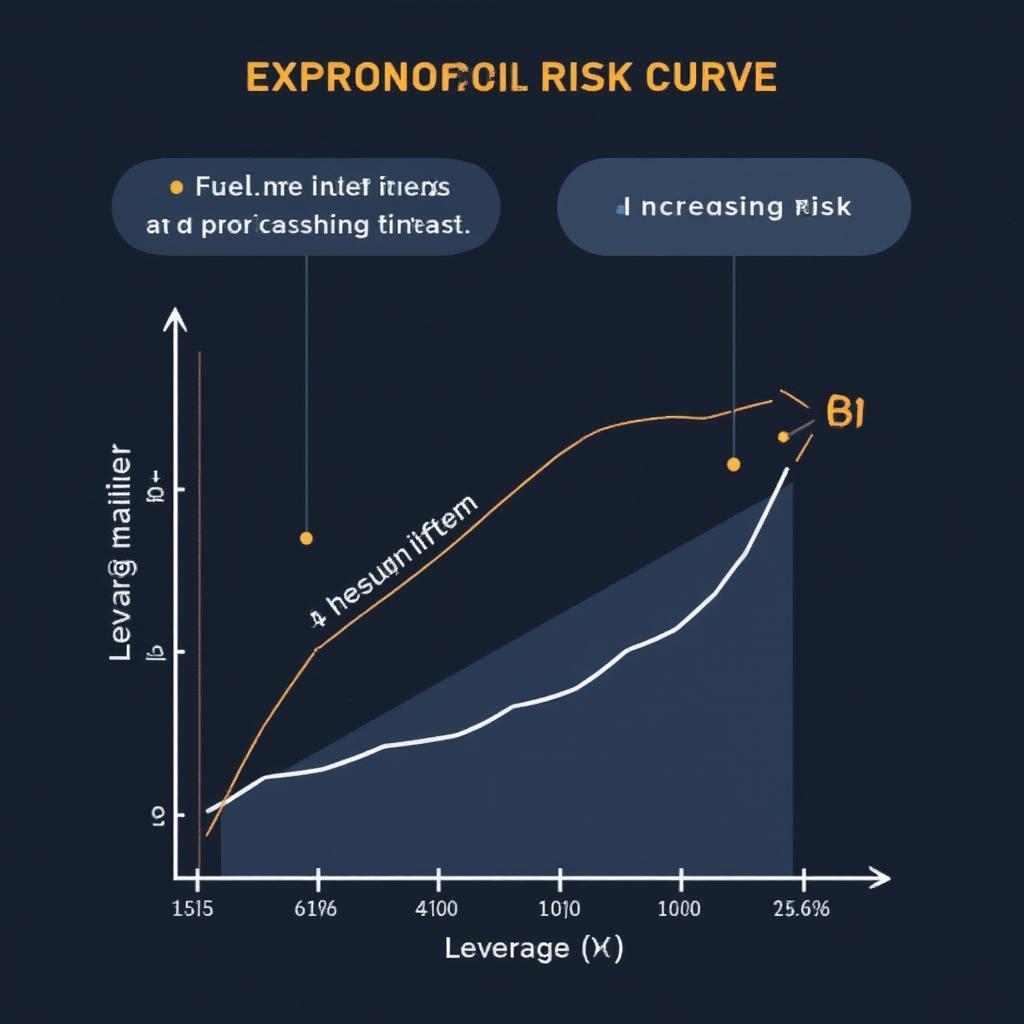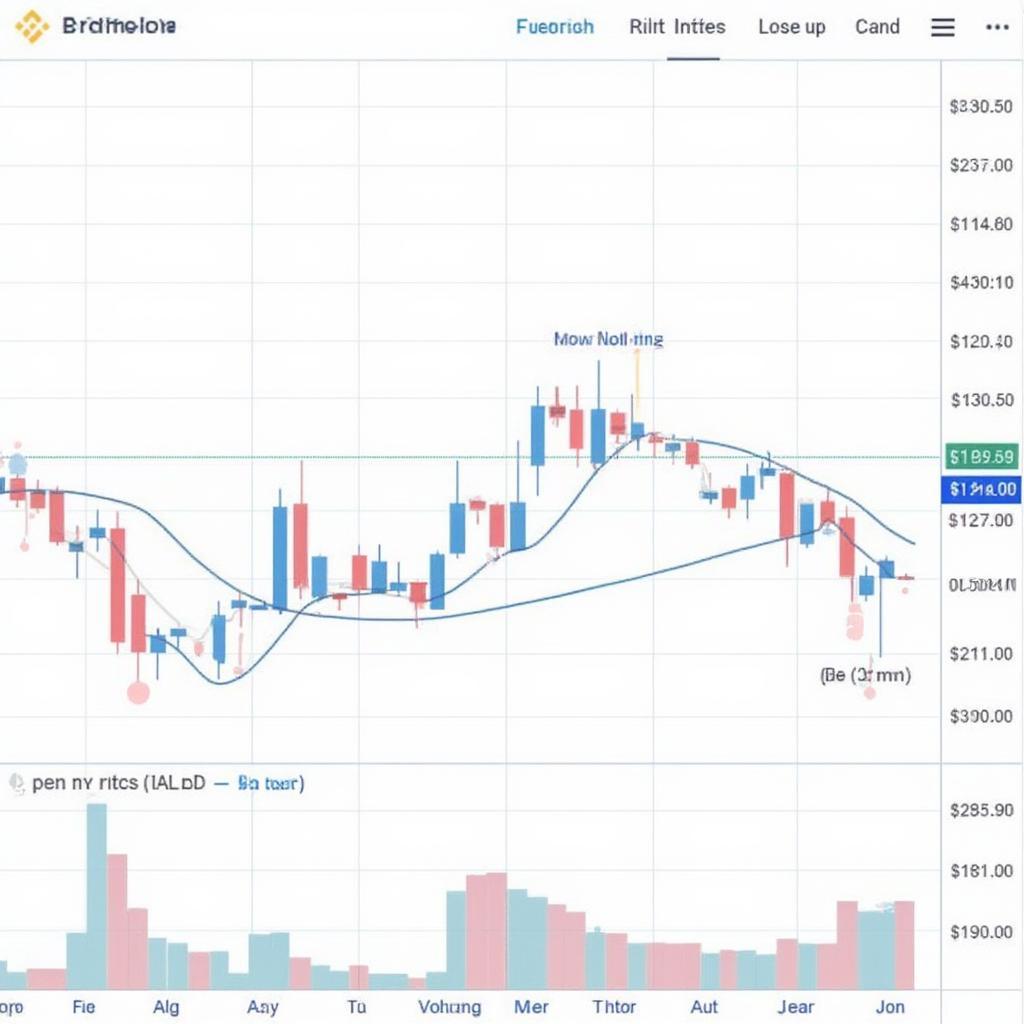Understanding Spot Trading Binance Fees: A Comprehensive Guide

Spot trading on Binance is a popular way for cryptocurrency enthusiasts to buy and sell digital assets. But, like any exchange, it comes with its own set of fees. Understanding these Spot Trading Binance Fees is crucial for optimizing your trading strategy and maximizing your profits. Whether you’re a seasoned trader or just starting out, this guide will break down the complexities of Binance’s fee structure, offering tips to help you navigate the exchange effectively. Let’s explore how these fees impact your trading and how to potentially reduce them.
What Exactly are Spot Trading Fees on Binance?
Binance, like most crypto exchanges, charges fees for executing trades on its spot market. These spot trading binance fees are essentially the cost of using the platform to buy or sell cryptocurrencies. They are charged as a percentage of the total trade value and are crucial to consider, as they directly affect your net profit. Failing to factor these fees into your trading decisions can lead to unexpected costs and reduced returns.
The Maker vs. Taker Fee Model Explained
Binance utilizes a maker-taker fee model for spot trading. This model is designed to encourage liquidity in the market.
- Maker Fees: A maker is someone who places an order that doesn’t immediately execute, thus adding liquidity to the order book. For example, if you place a limit order to buy Bitcoin at a price below the current market price, your order will sit in the order book until someone is willing to sell at that price. This action ‘makes’ the market, and thus you are charged a lower fee.
- Taker Fees: A taker, on the other hand, places an order that is immediately filled by an existing order in the book, thus removing liquidity. For example, placing a market order to buy Bitcoin at the current market price means you are instantly matched with an existing order, and therefore ‘take’ liquidity from the market. This action results in a higher fee.
Understanding this distinction is important because it allows you to strategically place orders and potentially lower your fees. Are you placing an order that will rest in the order book or one that will be instantly fulfilled? This choice will determine the type of fee you’ll incur.
Standard Trading Fee Structure on Binance
Binance employs a tiered system for spot trading binance fees, which means that the fee you pay depends on your trading volume over a 30-day period and your Binance Coin (BNB) holdings. The more you trade, the lower your fees can become.
Generally, the standard fee structure looks something like this:
- Tier 1 (VIP 0): For traders with lower trading volumes and BNB holdings, the standard taker fee is typically around 0.1%. Maker fees are also around 0.1%.
- Higher Tiers: As your trading volume increases, or if you hold a significant amount of BNB, you can move into higher VIP tiers. These tiers come with reduced trading fees, both for makers and takers. Some of the highest tiers see fees as low as 0.02% for makers and 0.04% for takers.
“Understanding the tiered structure is essential for serious traders,” says David Chen, a seasoned financial analyst. “It allows for better planning and execution of trading strategies, which can significantly impact profitability over time.”
How Do I Calculate Spot Trading Binance Fees?
Calculating your spot trading fees on Binance is fairly straightforward once you understand the basics. The fee is calculated as a percentage of your total trade volume, based on the fee structure applicable to your tier.
Here’s the basic formula:
Fee = Trade Volume * Fee Rate
Let’s break that down with an example:
- Scenario: You are in VIP tier 0 and want to buy 1 Bitcoin for $60,000.
- Fee Rate: Your taker fee is 0.1%
- Calculation: Fee = $60,000 * 0.001 = $60
- Total Cost: Your total cost for buying 1 Bitcoin will be $60,060, this includes the cost of the Bitcoin and the $60 trading fee.
It’s also important to factor in any discounts you may receive for using BNB to pay your fees, as this can further reduce the total cost.
The Impact of BNB Discounts on Fees
Binance offers a significant reduction in fees for those who opt to pay their fees using the Binance Coin (BNB). If enabled, Binance automatically deducts fees in BNB at a discounted rate. This discount can range from 10% to 25% depending on the current promotion.
Let’s revisit the previous example:
- Scenario: Same as before, buying 1 Bitcoin for $60,000, and your taker fee would normally be $60.
- BNB Discount: Assume you have BNB enabled and qualify for a 25% discount.
- Discounted Fee: $60 * 0.25 = $15 discount
- Actual Fee Paid: $60 – $15 = $45
- Total Cost: Your total cost for buying 1 Bitcoin is now $60,045.
As you can see, paying fees with BNB can lead to significant savings over time, especially for active traders.
How To Reduce Your Spot Trading Binance Fees
Reducing spot trading binance fees is crucial for optimizing your trading strategy. Here are some effective methods you can implement:
Increasing Trading Volume to Reach Higher VIP Tiers
As mentioned earlier, Binance has a tiered fee system, and trading volume is the primary factor determining your tier. The higher your VIP tier, the lower your fees will be. To increase your trading volume, you might want to:
- Trade More Frequently: Increase the number of trades you make within a 30-day period.
- Trade Larger Amounts: By trading larger amounts per transaction, you can hit the required volume more quickly.
“It’s not just about trading more; it’s about being strategic in your trades to reach higher tiers,” says Emily Carter, a blockchain investment strategist. “Planning your trades to maximize volume while maintaining your trading strategy is essential for active traders.”
Using BNB to Pay Trading Fees
One of the simplest ways to reduce your fees is to pay them using BNB. Binance offers significant discounts for using BNB, and this can lead to substantial savings over time. To ensure you are using BNB for fees:
- Make Sure You Have BNB: Ensure that you hold some BNB in your account.
- Enable BNB Discounts: Navigate to your account settings and enable the option to use BNB to pay for your fees.
Placing Maker Orders Instead of Taker Orders
As discussed, maker orders incur lower fees. You can reduce your fees by carefully placing your orders:
- Place Limit Orders: Instead of using market orders (which are immediately filled), place limit orders at a specific price. This will place your order into the order book, and if it’s not immediately filled, you’ll incur maker fees.
- Be Patient: Sometimes, waiting a bit for your limit order to get filled is better, because you can save on fees.
Participating in Binance Promotions and Events
Binance often runs promotions and events that offer reduced or waived trading fees. Keep an eye on their official announcements and social media channels to stay informed about these opportunities. These promotions may include:
- Trading Competitions: Sometimes, specific trading pairs are selected for trading competitions where participants receive reduced fees.
- Fee Waiver Events: On occasions, Binance offers events where trading fees on certain pairs are completely waived.
Understanding the Impact of Fees on Your Trading Strategy
It is vital to comprehend how spot trading binance fees can significantly affect your trading strategy and the overall profitability of your trades. Small fees can accumulate quickly, especially for active day traders.
The Accumulative Effect of Trading Fees
While each individual fee might appear insignificant, the cumulative effect of repeated trading can add up to a substantial amount over time. For instance, let’s say you conduct a few trades each day at a 0.1% fee. Over the course of a month, the total fees you’ve paid can have a considerable impact on your returns. For active traders, these costs can add up to the equivalent of a missed opportunity to invest the same amount in assets.
How Fees Impact Day Trading and Scalping
Day trading and scalping are strategies that rely on making frequent trades to capitalize on small price movements. Since these involve a large number of trades, fees become an even more significant factor. For example, if a scalper makes 50 trades a day, fees can quickly consume a large portion of their profits. Therefore, minimizing fees is particularly critical for such strategies.
Adjusting Your Trading Style Based on Fees
Consider the following adjustments for different trading styles:
- Long-Term Investors: Long-term investors, who hold assets for an extended period, should primarily focus on maximizing their positions while being aware of fees. Since they don’t trade as frequently, they may not need to worry as much about achieving higher VIP tiers.
- Active Traders: Active traders, especially day traders and scalpers, should place a strong emphasis on minimizing fees by trading in higher volume and using BNB for fees. Strategies like limit orders for maker fees should also be considered.
- Swing Traders: Swing traders, who hold positions for days or weeks, can benefit from optimizing both trading volume and BNB discounts. They should aim for VIP tiers, where fee reductions are more substantial.
Spot Trading Binance Fees – Beyond the Basic
There are a few more considerations when understanding Binance Spot trading fees, that go beyond the common use cases:
Trading Pairs and Specific Fees
It’s worth noting that although the standard maker-taker model is applied across most trading pairs, there might be slight differences or promotions with specific pairs. Some pairs might offer reduced fees as part of special promotions, or they could have variations in fee structure, depending on their popularity. It’s beneficial to always double check the fee structure for pairs that you are frequently trading.
Understanding the Difference between Spot and Futures Fees
It is also crucial to differentiate between the fees associated with spot trading and those related to futures trading on Binance. The fee structure for futures trading can differ, with separate maker and taker fees and other costs associated with leverage. Always ensure that you are clear about the fee structure relevant to the type of trading you are engaged in.
Staying Up-to-Date with Fee Changes
Binance sometimes updates its fee structure or promotions, so it’s essential to stay up-to-date with any changes. Checking the platform regularly and following their announcements will help you avoid any unexpected costs.
“The dynamic nature of the crypto market calls for traders to be well informed,” states Sarah Lee, a risk management consultant. “Monitoring fee changes and adapting your strategy to them is key to sustained profitability.”

Conclusion
Understanding spot trading binance fees is crucial for any trader, from beginners to seasoned professionals. By understanding the nuances of the maker-taker model, the tiered fee structure, and the benefits of using BNB, you can significantly reduce your costs and improve your trading profitability. Furthermore, understanding how fees impact different trading strategies, as well as staying up-to-date with platform updates, can help you refine your overall trading approach. Ultimately, a well-informed and strategically executed trading plan can help you capitalize on the opportunities within the cryptocurrency market.
Frequently Asked Questions (FAQ)
-
What are spot trading fees on Binance?
Spot trading fees on Binance are charges incurred when buying or selling cryptocurrencies on the exchange’s spot market, calculated as a percentage of the total trade value. -
How does the maker-taker fee model work?
The maker-taker fee model on Binance charges a lower fee for maker orders, which add liquidity, and higher fees for taker orders, which remove liquidity. -
How do I know what VIP tier I’m in?
You can check your VIP tier by navigating to your account dashboard on the Binance platform. The tier is based on your trading volume and BNB holdings. -
Why should I use BNB to pay my trading fees?
Using BNB to pay your trading fees can grant you a discount ranging from 10% to 25%, reducing overall costs. -
How do I place a maker order to get lower fees?
To place a maker order, use a limit order at a price that’s not the current market price. This will sit in the order book until filled and will incur maker fees. -
Can I reduce spot trading fees on Binance?
Yes, you can reduce your fees by increasing your trading volume to reach higher VIP tiers, paying your fees using BNB, and placing maker orders instead of taker orders. -
Are there any other hidden fees I should know about?
Beyond spot trading fees, always be aware of deposit and withdrawal fees. Also note there are different fees for Futures trading. It’s always best to read the Binance terms. -
Are the trading fees the same for all trading pairs on Binance?
While the basic fee structure applies across most pairs, specific trading pairs might have temporary promotions with reduced fees or slight variations in structure. It is always best to confirm. -
How often should I review my spot trading fees on Binance?
It’s advisable to review your trading fees regularly, perhaps once a month, to ensure you are optimizing your strategy and are aware of any changes to fee structure.




